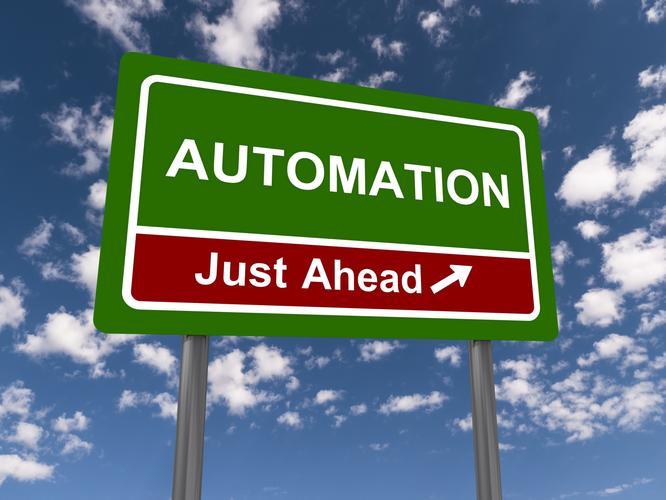
Stress that RPA is a step in automation, and that it can remove mundane, repetitive tasks from some roles, freeing up staff for higher-value work
Gartner estimates that 60 per cent of organisations with a revenue of more than US$1 billion will have deployed robotic process automation (RPA)tools by the end of this year.
By 2022, however, 85 per cent of large and very large organisations will have deployed some form of RPA.
In financial terms, this means global spending on robotic process automation (RPA) software is estimated to reach US$680 million in 2018, an increase of 57 per cent year over year. In four years, it estimates that RPA software spending will reach US$2.4 billion.
By next year too, Japanese language versions of the major RPA tools will be delivered, increasing total market size by 15 per cent through 2021.
Japan is one of the fastest-growing RPA markets this year, and, due to local lack of employee productivity due to cultural work practices, is seeing strong RPA adoption, says Gartner.
This ability to contextualise and build RPA scripts in Japanese will accelerate demand since this eliminates the need to find programmers that are fluent in both English and Japanese, says Gartner.
The biggest adopters of RPA today include banks, insurance companies, utilities and telecommunications companies, says Cathy Tornbohm, vice president at Gartner.
“Typically, these organisations struggle to knit together the different elements of their accounting and HR systems, and are turning to RPA solutions to automate an existing manual task or process, or automate the functionality of legacy systems,” says Tornbohm.
RPA tools mimic the “manual” path a human worker would take to complete a task, using a combination of user interface interaction describer technologies. The market provides a broad range of solutions with tools either operating on individual desktops or enterprise servers.
Advertise internally for people who have an aptitude and desire to design robot scripts.
“The growth in adoption will be driven by average RPA prices decreasing by approximately 10 per cent to 15 per cent by 2019, but also because organisations expect to achieve better business outcomes with the technology, such as reduced costs, increased accuracy and improved compliance,” says Tornbohm.
In her global forecast for RPA, she notes that most organisations pilot RPA with simple, repetitive tasks and see that the tool works. Common outcomes for these tasks include reduction in work hours, improved data entry accuracy and reductions in task completion time.
Most RPA customers struggle with scaling the technology after the pilot. This is because they encounter issues with unknown, misunderstood nondocumented processes, organisational politics, IT challenges (including governance), and the need to integrate more complex AI technology to actually automate a particular process, the report states.
Evaluate first before deployment
In order to make an RPA project a success, leaders must first evaluate the possible use cases for RPA in their organisation and also focus on revenue-generating activities.
“Do not just focus on RPA to reduce labour costs,” says Tornbohm.
“Set clear expectations of what the tools can do and how your organisation can use them to support digital transformation as part of an automation strategy.”
She says the next step is to identify quick wins for RPA.
These can be tasks that require people to solely move data between systems or involve structured, digitalised data processed by predefined rules.
Challenges of change, fears of job losses and media coverage bring potential resistance and can even sabotage automation plans
While those are the use cases where RPA delivers a high ROI, it is important to consider alternative existing tools and services, which already provide a significant proportion of the required functionalities at a suitable price point. Those alternatives can be used in parallel with RPA, or as a hybrid solution. When choosing a vendor, also ask for future AI-based options, she states.
Tornbohm discusses the importance of communicating what RPA means to the organisation as part of the deployment of the technology.
“Challenges of change, fears of job losses and media coverage bring potential resistance and can even sabotage automation plans,” she points out.
She says some steps to improve adoption of RPA include:
■ Explaining your philosophy of automation and how you will prioritise RPA and other automation tools by geography, division or business unit.
■ Advertising internally for people who have an aptitude and desire to design robot scripts.
■ Advertising internally as well for people to learn how to spot processes ripe for automation and link this to the lean and Six Sigma training and teams.
■ Stressing that RPA is a step in automation activities, and that it can remove mundane, repetitive tasks from some roles, freeing up staff for higher-value work.
 Credit: Cisco
Credit: Cisco Follow CIO New Zealand on Twitter:@cio_nz
Sign up for CIO newsletters for regular updates on CIO news, views and events
Join the CIO New Zealand group on LinkedIn. The group is open to CIOs, IT Directors, COOs, CTOs and senior IT managers.
